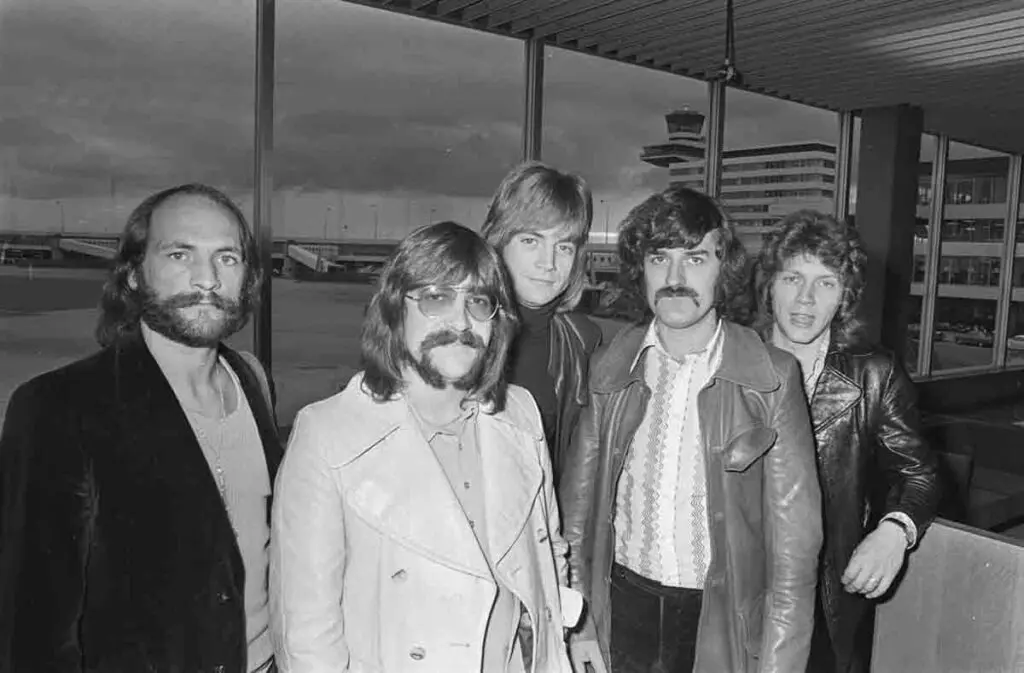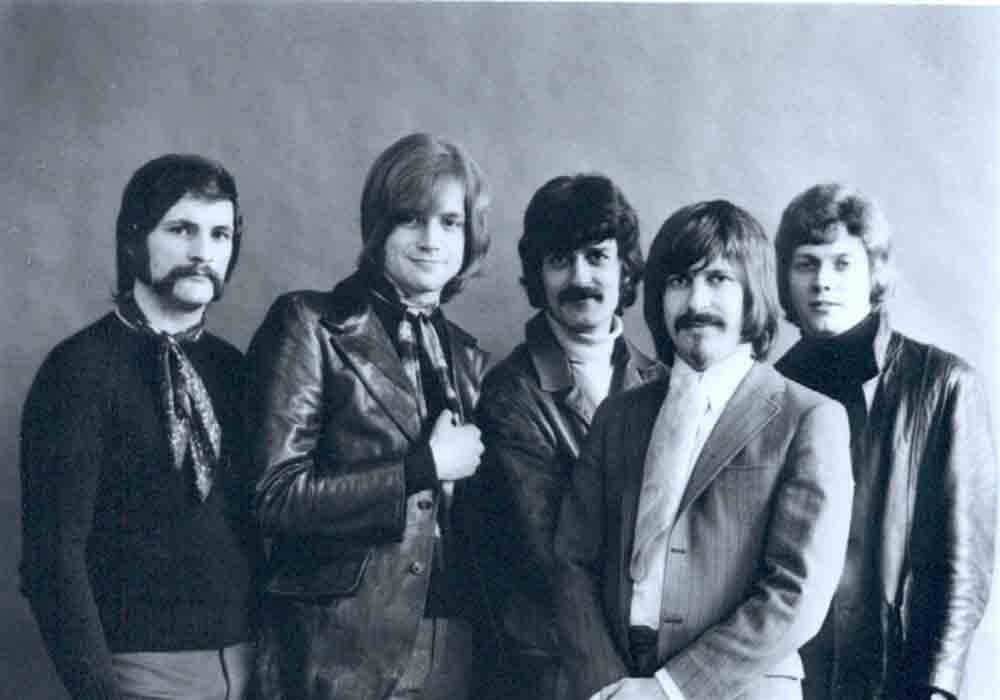The Moody Blues are a British rock band. It was established in 1964 in the suburb of Erdington (Warwickshire). The group is considered to be one of the creators of the Progressive Rock movement. The Moody Blues are one of the first rock bands that are still developing today.

Creation and early years of The Moody Blues
The Moody Blues were originally created as a rhythm and blues band. Early in their long career, the band consisted of five members: Mike Pinder (synth operator), Ray Thomas (flautist), Graham Edge (drums), Clint Warwick (bassist) and Danny Lane (guitarist). The peculiarity of the group was the absence of the main vocalist. All participants had excellent vocal abilities and equally took part in the recording of the track.
The main venue for the performance of the guys were clubs in London. They gradually found an insignificant audience, and the salary was enough only for the most necessary things. However, things soon changed dramatically. The start of the team's career growth can be considered participation in the television program Ready Steady Go!. It allowed the then unknown musicians to sign an agreement with the record label Decca Records.
The band's first hit is considered to be a cover version of the track Go Now by soul singer Bessie Banks. It was released for rent in 1965. However, it didn't work out very well for him. The promised fee was $125, but the manager paid only $600. At that time, professional workers received the same amount. The following year, the guys went on a joint tour with the legendary band The Beatles, and every day the participant was given only $ 3.
During a difficult period, the debut full-length album The Magnificent Moodies was released (in America and Canada in 1972 it was called In the Beginning).

The second period of life and the success that came
The coming year 1966 was marked for the group by changes in the composition. Lane and Warwick were replaced by Justin Hayward and John Lodge. The crisis and the lack of creative ideas led to delays in creativity. These troubled times demanded radical changes. And they have arrived.
Popularity allowed the musicians to become independent from the manager. The guys decided to reconsider the concept of pop music, combining rock, orchestral richness and religious motives. Mellotron appeared in the arsenal of tools. It was not yet common in rock sound at that time.
The second full-length album Days of Future Passed (1967) was a concept creation created with the support of the London Symphony Orchestra. The album made the band a significant profit, and it also became a role model.
There were many "newcomers" who stubbornly copied the style and tried to succeed. The single Nights In White Satin made a big splash in music. Even more success was in 1972, when the track was re-released, and it took the lead in the charts in America and Britain.
The album following him, In Search of the Lost Chord, was released in the summer of 1968. In her native England, she entered the top 5 best albums. And in America and Germany got into the top 30. The album was certified gold in the United States and platinum in Canada.
The songs were written in a unique style, on the Mellotron. The album contains music from the East. The themes of the tracks are varied and touch the soul. They talk about spiritual development, the need to look for your life path, to strive for new knowledge and discoveries.
Progressive rock
After this work, The Moody Blues began to be considered a group that brought progressive rock to music. In addition, the musicians were not afraid of experimentation and actively combined psychedelic music with art rock, trying to properly present their tracks with a complex structure to their "fans".
Thanks to subsequent work, the group gained even greater popularity. The unusual style, which included orchestral loftiness and impressionism, was suitable for film music tracks. Philosophical reflections and religious themes were touched on in tracks up to the album Seventh Sojourn (1972).

Concert tours and new albums
The group gained immense popularity in the United States. The absence of a clear leadership among the team members, high professionalism and pedantry led to the fact that the group spent months to achieve impeccably completed tasks. Time passed, but the music did not change. The texts were even more filled with lines about cosmic messages, which had already lost their novelty among the listeners. The formula for success was found, and there was no change in her desire. The drummer talked about changing all the titles on tracks and albums and you end up with the same thing.
A tour of the United States of America, held in 1972-1973, allowed the group to become richer by $ 1 million. Thanks to the interaction with Threshold Records, which was owned by the production association Rolls-Royce, the group received an additional round sum.
In 1977, fans received the live album Caught Live +5. A quarter of the collection was occupied by early unreleased tracks relating to the beginning of the birth of symphonic rock. The rest of the songs were live recordings from the Albert Hall of Arts and Sciences in London dated 1969.
The new full-length album Octave was released in 1978 and was warmly received by the band's fans. Then the musicians went on a tour of Britain. Unfortunately, due to aerophobia, Pinder was replaced by Patrick Moraz (he was previously seen in the band Yes).
A new era that opened in the 1980s of the twentieth century began with the disc Present (1981). The album became a "breakthrough", taking a leading position in the US music tops and 7th position in England. He was able to show that the group has not lost their talent and is still able to adapt their work to the ever-changing fashion. The musicians could still do what many fans expected from them.
In 1989, Patrick Moraz left the band. Even while working with the team, he was engaged in solo work, releasing several works. He continues his musical work to this day.
Modernity of The Moody Blues
Since that time, several more full-length works have been released. With the onset of the second millennium, tours became less frequent. Ray Thomas left the band in 2002. The final album was released in 2003 and was called December.
At the moment (information from 2017), The Moody Blues is a trio: Hayward, Lodge and Edge. The group continues to conduct concert activities and gathers many thousands of halls. Their songs have become a real indicator of how progressive rock began.
The "golden" period of the group has long passed. It is unlikely that we will already see a new album that will delight with something radically new. Time passes, and new stars appear on the horizon, which, having gone such a long way, will also become legendary. It will be music that has stood the test of time.



